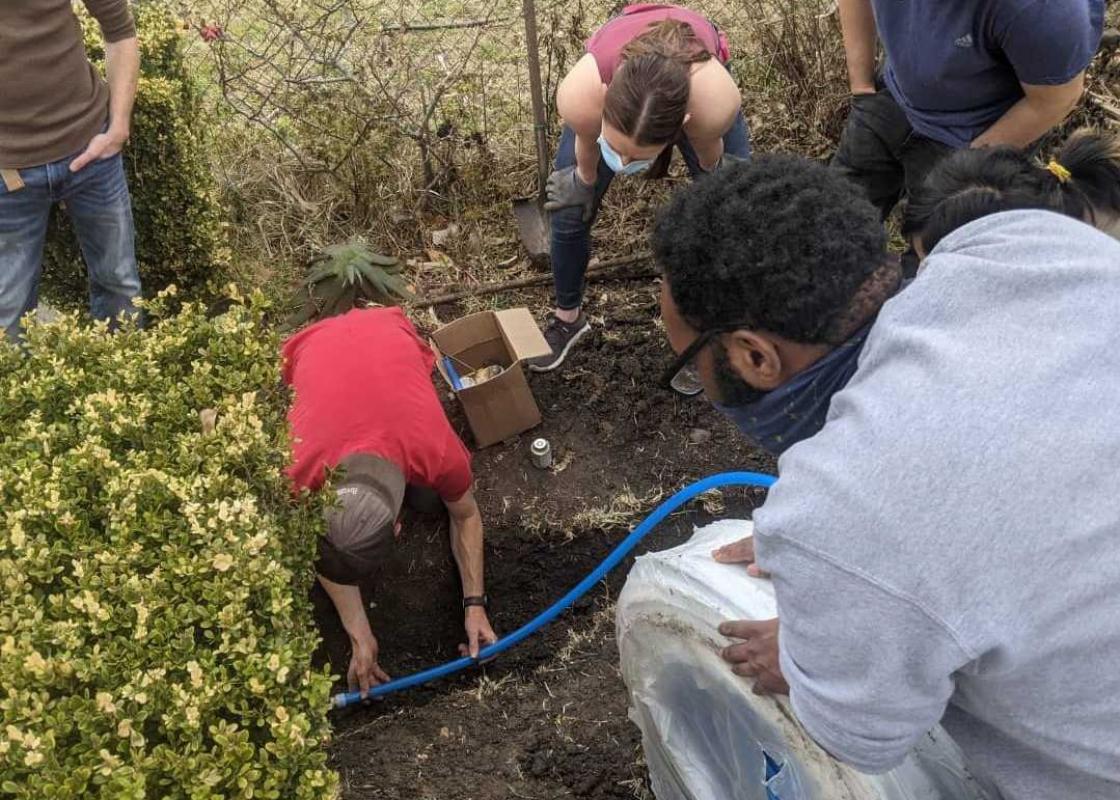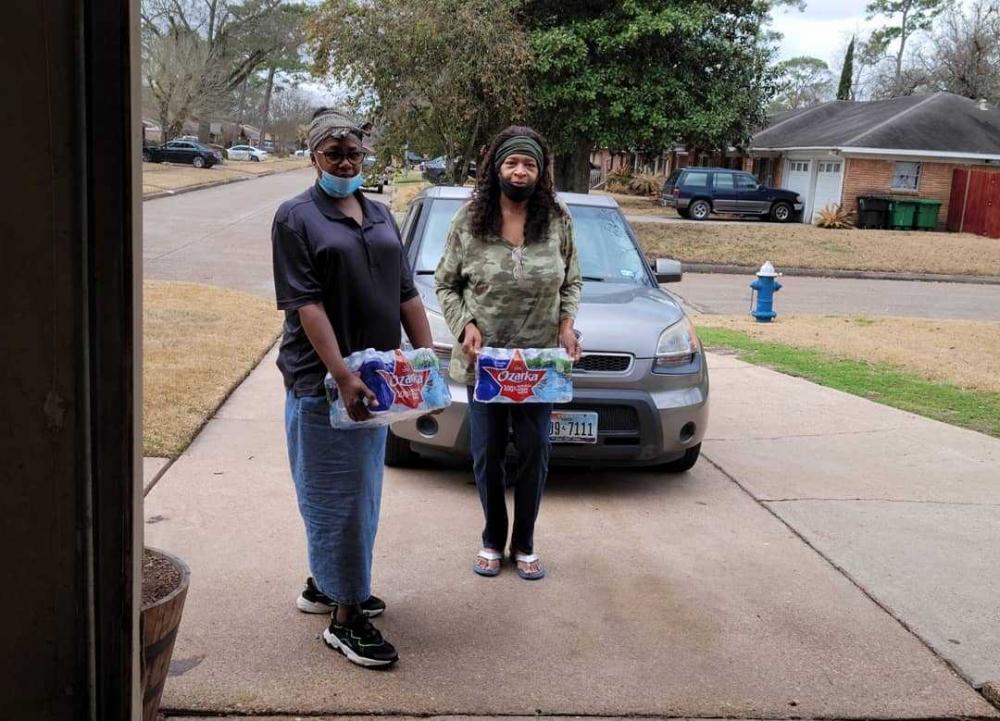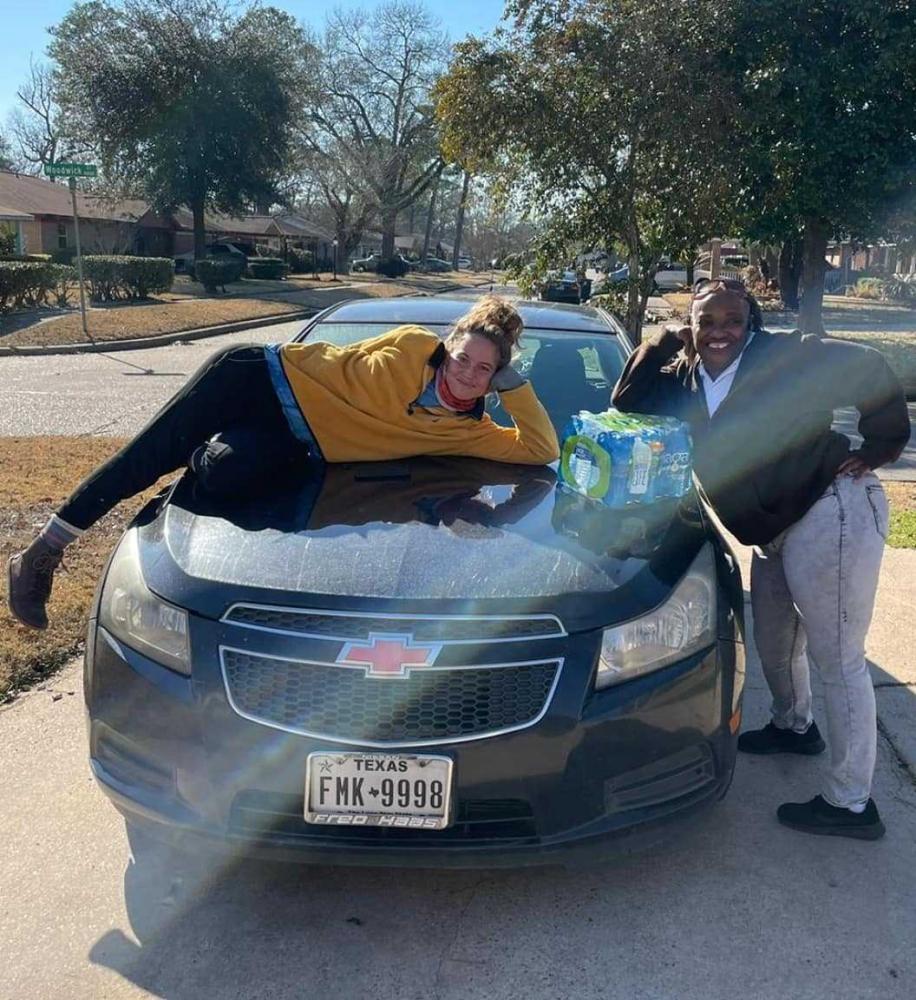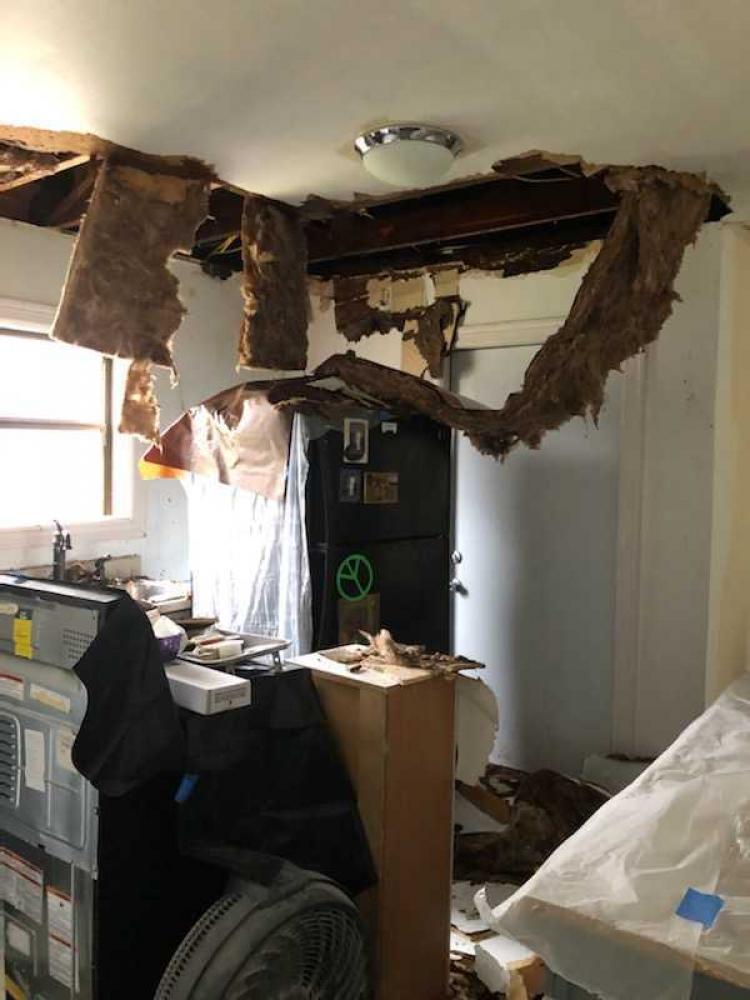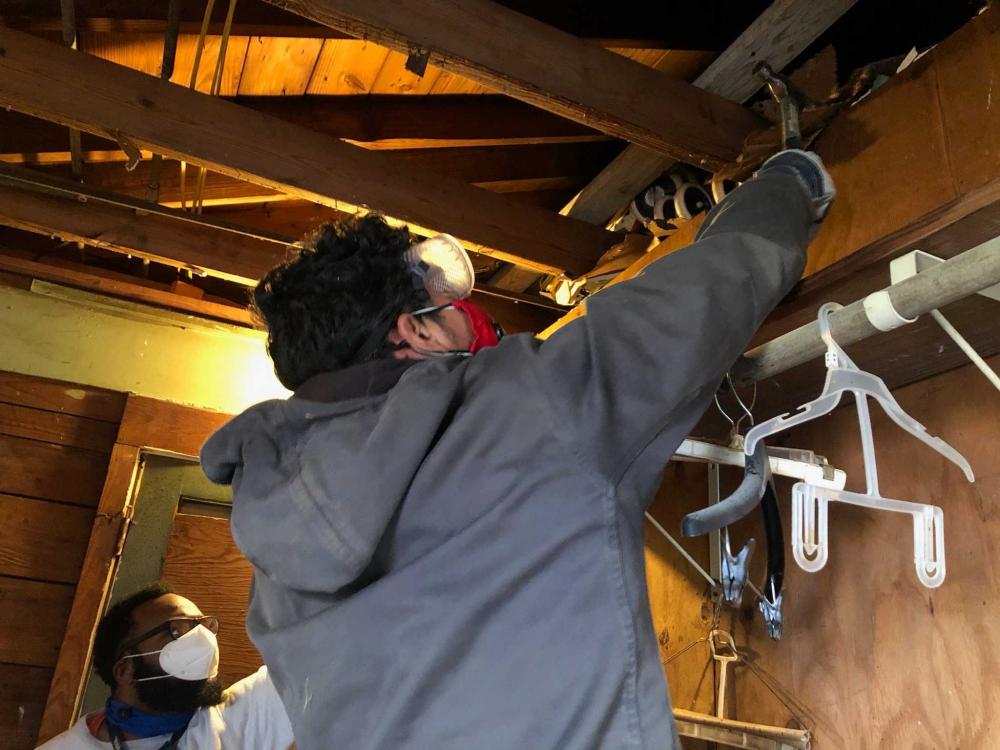Anticipated Breakdown
There’s no such thing as a natural disaster. A disaster is a profoundly cruel and unnatural event. Along the Gulf Coast, the public understanding of disasters as political and historical—shaped by policies, inequalities, and human actors—has grown from an undercurrent in the aftermaths of Hurricanes Katrina, Harvey, and Maria to an outpouring of rage directed at ERCOT and the Texas government during February’s Winter Storm Uri. At West Street Recovery, a grassroots disaster recovery and environmental justice organization where I work, we have dubbed the storm the “Deep Freeze.” Examining the form of a disaster—the speed and shape with which it unfolds and flows through a community—reveals the underlying forces and overarching conditions which brought that disaster to be.
The spatial form of the Deep Freeze should be defined primarily by its utter emptiness: no heat, no electricity, no drinkable water, no government response, no corporate accountability. Like the growling of a hungry stomach, the emptiness is loud and insistent. The moment a tool fails to function as it was built, designed, and expected to perform is the exact moment when that tool’s purpose is most viciously felt. A pipe’s failure to deliver water means water can no longer be used for drinking, bathing, or flushing the toilet, but instead finds other outlets in collapsed ceilings, wet carpets, and bathtubs full of soggy insulation. A house’s failure to keep a family warm means that the home, the sole refuge available during the pandemic, collapses into a space of survival or death.
A government’s failure to keep its people alive means that during a crisis we can only rely on ourselves and each other. In Houston after Uri, neighbors who had rescued each other on inflatable kayaks during Harvey now repaired each other’s pipes and shared supplies. Mutual aid networks led by 20-somethings with iPhones coordinated the distribution of hundreds of thousands of dollars, tens of thousands of cases of drinking water, and thousands of hot meals. Groups of volunteers gathered with gloves and trash bags to remove wet sheetrock, insulation, and floorboards.
Working in tandem with that mutual aid network, the seven staff members of West Street Recovery were the only option for dozens of families in northeast Houston for repairs to their broken plumbing. We hosted trainings to teach people how to repair their own pipes, waited in lines for hours for scarce plumbing parts, and sent our own team of plumbers to assess damage and restore water. Most of this on the ground movement happened before any formal government or agency aid responses began.
“Deep Freeze” describes the lack of government response as much as it references the below-zero temperatures of the storm. A family freezing to death in their own home might ask, “Why isn’t anyone doing anything?”
In fact, everything had already been done. The decisions were already made, and the current situation was merely the outcome of those decisions. The energy sector in Texas had been deregulated—and past failures of the grid repeatedly ignored—because government regulatory agencies and energy companies decided that certain lives are disposable. For those energy companies, disasters like this polar freeze that restrict supply and boost demand are hugely profitable. During the freeze, prices spiked from an average of around $35/Mwh to ERCOT’s maximum of $9,000/Mwh. Life-sustaining resources and services cannot be controlled and distributed through a market and determined by price and what economists call “willingness to pay.” The architects of this strategy include not only the obvious villains, the oil and gas companies who demanded deregulation, but also the austerity theorists who formulated the ideology to rationalize and naturalize life-threatening deprivations. They’re all complicit in the 111 lives lost, and countless homes destroyed, during the storm.
Forced Resilience
The temporal form of the Deep Freeze is intense déjà vu. Crises transform linear time into concentric circles, with each new disaster emerging at the center of the previous one. Only unlike hurricanes, this time the floodwaters came from inside the homes. In northeast Houston, the storm forced homeowners who flooded during Harvey and Imelda to decide whether or not to muck their homes for a second or third time in the span of a few years. Mucking is the process of removing wet and porous material from a home; it can involve tearing out floorboards, tearing out wall and ceiling sheetrock and insulation, and removing carpets and furniture. Removing everything wet is necessary to prevent deadly mold from forming. The trauma and fatigue of constant disasters make the idea of having to tear everything out and start over, yet again, almost unimaginable.
Looking at this situation, the glaring design failures are obvious. Physically, houses in these flood-prone areas are built with materials that break down at the earliest encounter with moisture or that absorb and spread moisture. After Harvey, Imelda, and now Uri, West Street Recovery has been implementing flood-resilient design in the homes that we repair, from moisture barriers inside walls to freeze-resistant PEX piping that can stretch and expand without breaking. Houses built from cheap composite materials and stuffed with toxic insulation are not a “design problem” per se—they work as well as the market has decided these communities deserve.
In terms of governmental relief, intake systems for aid force disaster victims—often in urgent situations with unlivable homes—to complete piles of complex paperwork to prove and reprove that they flooded. Many people in dire need of help are given blanket denials due to homeownership status, “pre-existing conditions,'' or citizenship status. Current intake systems might meet and exceed recovery needs for middle-class households, but they regularly fail the poor.
Rather than a problem of design, disaster recovery is a problem of political will and enduring societal inequalities. Resilience against flooding is not enough. In order to survive, the communities of northeast Houston and other “sacrifice zones'' have been forced to learn resilience against a political system that repeatedly devalues their lives and works against the fulfillment of their basic rights and dignity.
Resilience at the level of the single home is also not enough. Inequalities rooted in race and class manifest most prominently at the neighborhood scale, from environmental injustice to police brutality and underfunded public schools. For decades the McCarty Road Landfill, the Union Pacific railroad facility, and other toxic sites have leaked industrial toxins, including cancer-causing PCBs, into the area’s air and ground. Right now there is an ongoing lawsuit against the City of Houston for its “failure to properly operate and maintain its sewage lines,'' which led to thousands of illegal sewage spills concentrated in Black and brown neighborhoods.
There is no such thing as a full recovery when there is no livable baseline to re-establish. If the disaster recovery apparatus continues to set strict eligibility standards and “pre-storm conditions'' as an acceptable standard for recovery, it will only serve to exacerbate current injustices. Individualized resilience valorizes families “bouncing back” to pre-crisis conditions after isolated events, when in reality resilience is a constant and mandatory survival mechanism. In an unjust system, it places the burden of social responsibility and obligation on those with the least power. It’s unfortunately consistent with the neoliberal push to individualize everything, to remove every safety net and abandon every household to fend for themselves.
Anti-Design Design
Alternatively, disaster recovery should be integrated into a broad array of ongoing services, mutual aid networks, and efforts to build democratic community power. Resilience in this most expansive sense of the term requires design only in its most rudimentary expressions. That is, the actual work of disaster recovery is not technically complicated. But it is very hard, because it requires a fundamental shift in the state and civil society’s priorities and material distribution of resources.
For West Street Recovery, so far that design looks like a color-coded Google spreadsheet to track intake and open cases for plumbing repairs. It looks like a couple WhatsApp chats for community members to rapidly share needs and resources. It looks like establishing deep relationships with residents as to see and reach those who fall through the gaps of other aid sources. It looks like being friends with working people who can carry out plumbing and home repairs. Eventually, it looks like building the political power to shift much larger institutional resources towards fulfilling the needs of the people who need it most. Truly good design ultimately demands of us that we end the nightmare cycle of disasters and work towards a just future in order to fill the material emptiness of the Deep Freeze with community care and substantive freedom.
Alice Liu is a climate and environmental justice organizer with West Street Recovery, a horizontally organized grassroots group using rebuild and recovery efforts after Hurricane Harvey to build community power. While attending college in Houston she founded the Rice Climate Alliance, which is currently pushing for Rice University to divest from fossil fuels and private prisons.


